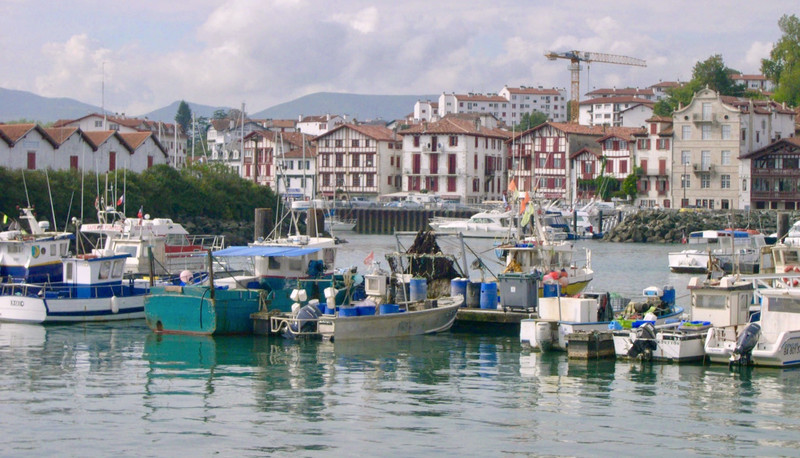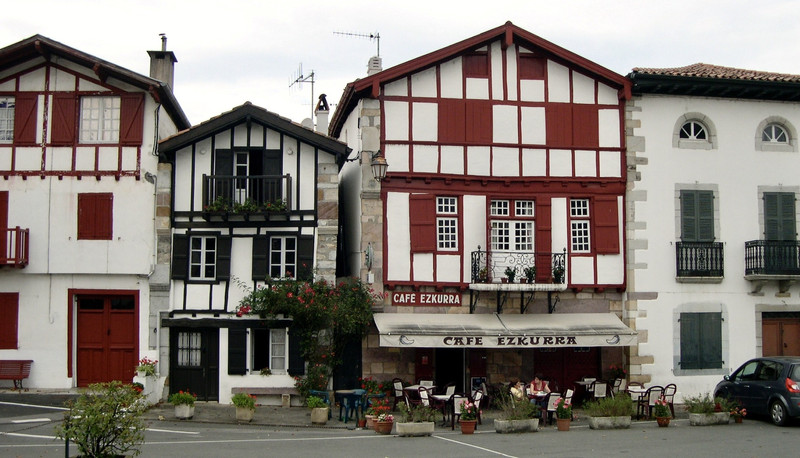Eating out in Saint Jean de Luz
We’ve been travelling around the Pyrenees for years, admiring the magnificent mountains that divide France from Spain, and enjoying the towns and villages of the foothills, but until this year we hadn’t been to the Basque region, along the Atlantic Coast.
We thought St Jean de Luz might be a bit glitzy and glam - all tight jeans, high heels & too much gold jewellery. But no, it’s a relaxed, smallish seaside town, quietly chic, a nice mixture of fine old Basque buildings, the odd posh villa (Louis XIV stayed here briefly), a fishing port and a fine beach, with plenty of swimmers still enjoying the ocean in early October. We bought ice creams (he pistachio, she violet) and sat on a bench, feeling quite at home. Tomorrow evening we’ll come back for a swim, we said .....
In any French town, a stroll around the market gives you a good idea of the food the restaurants and cafes are cooking and here in St Jean there are piles of beef-heart tomatoes, little black figs, red peppers, (hot and pointy, or round and mild) and green- and yellow-fleshed melons.
The Pyrenees region is home to a number of pale and interesting sheep cheeses; the best known are the Ossau-Iraty cheeses, with a fine texture and delicate flavour. Most of the Pyrenean cow cheeses are pale yellow, semi-hard and full of small holes. They have a springy, supple texture and range in taste from mild to old sports sock. The goat cheeses cover a similar range, mostly depending on age, from the delicate soft young cheeses to the stronger, hard mature ones.
There’s lots of rosy ham, local & Spanish, and foie gras, both popular items on local menus. I was persuaded by a smooth-talking baker to buy a local pie with layers of mince, tomato, potato and cheese - very hearty but not a dish I’d actively seek out again.
Gateau Basque is the definitive pastry hereabouts, definitely worth looking for, not that you have to look far - it’s in the market and in all the bakeries, both posh and modest. There are two main kinds, almond cream, or black cherry encased in a rich shortcake. One of the posh bakeries (& St Jean has plenty of those) makes a chocolate version - they’re all delicious. I think the almond one is the best, but we’ll be doing some more serious research when we return next year.
Macaroons, macarons in French, have been popular here since they were made for the marriage of the young Louis XIV to Marie Therese of Spain in 1660. Several specialist makers are still turning out the dainty almond meringue rounds, which come in many flavours (including wasabi, which may be a step too far). Usually they’re sandwiched together with a ganache, but plain singles are available too.
This is also tapas country, and a mixed platter for two is a good choice for a light meal. We ordered one at Chez Kako and worked our way through the little bites. What looked like olives were tiny sausages with a pepper coating. We cooled off with a courgette & prawn tart and a larger tomato tart. Beside the expected olives, cubes of sheep cheese and translucent slices of ham, we were surprised to find some little toasted cheese and ham club sandwiches. Surprised but very happy with our supper of tasty nibbles, a glass of chilled Navarre rosé, sitting at a table on the pavement on a warm autumn evening in this very likeable town. Like Arnie - we’ll be back.
2024 - Chez Kako is now called KAKO ETXEA, place des Halles, St Jean de Luz and continues to get good reviews.


